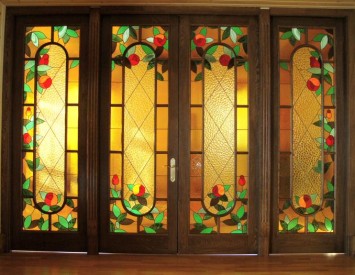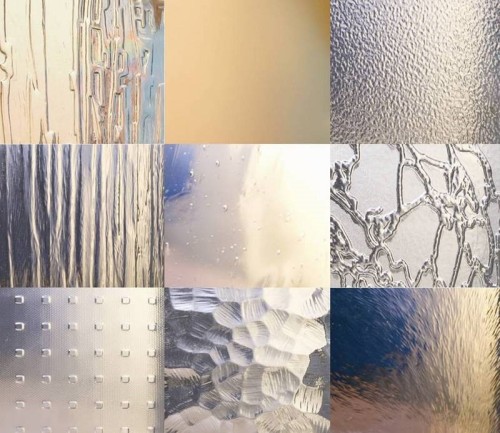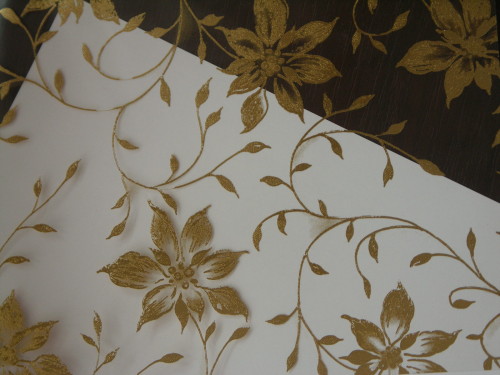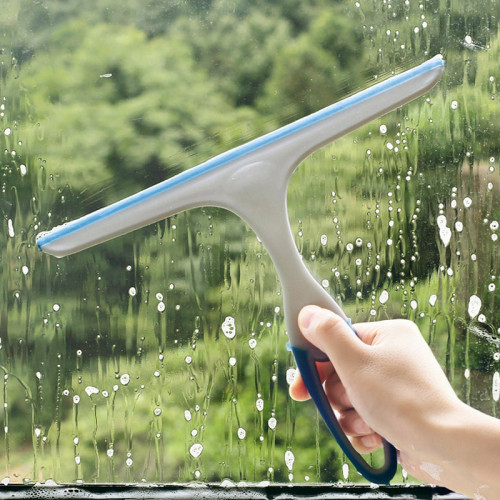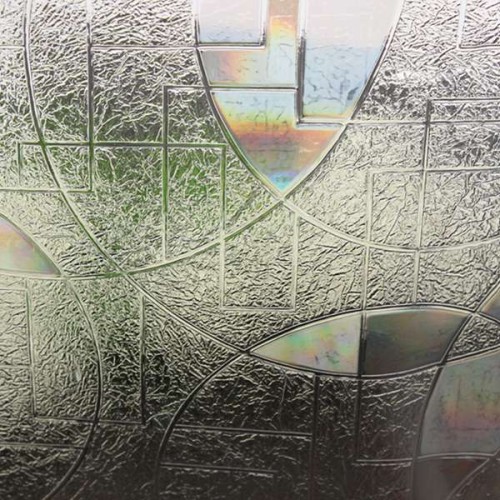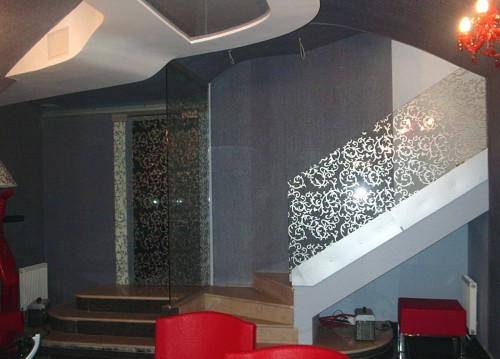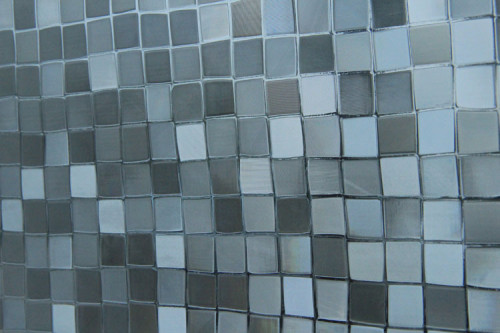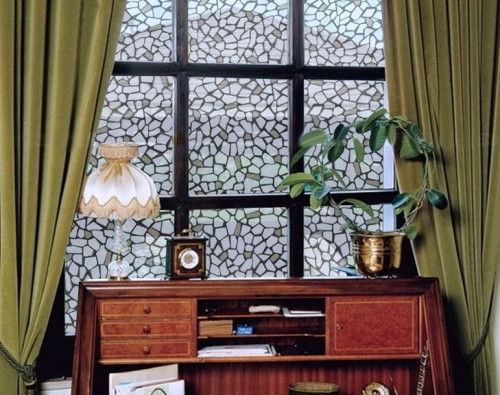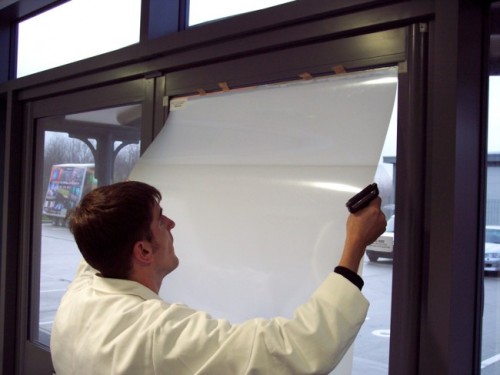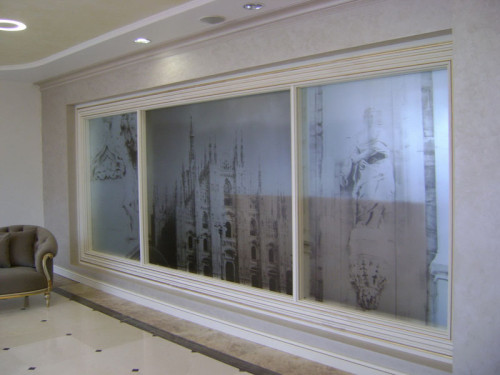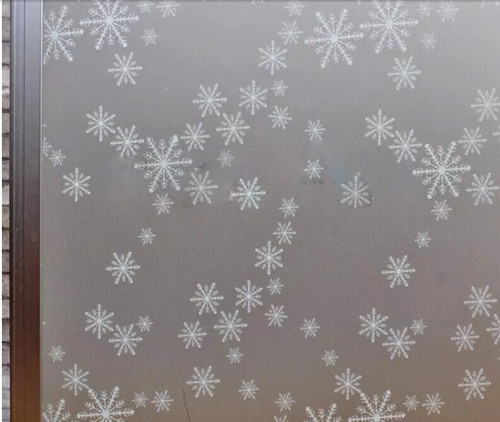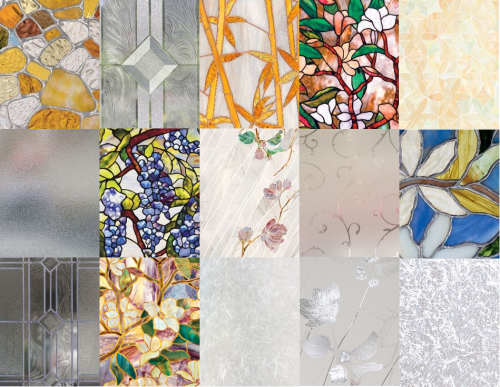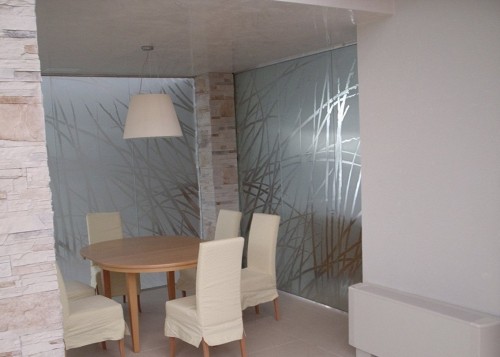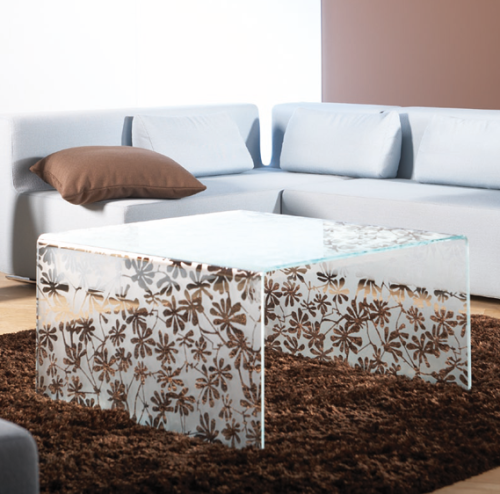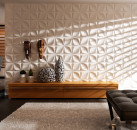Decorative film for glass is a multifunctional material, the purpose of which is decoking and protecting glass surfaces: windows, details of furniture and interior doors, shop windows, etc. We will tell about the types and characteristics of such films, as well as about the method of sticking them in this article.
Content
Features and varieties of material
The use of decorative films for window glass has several goals:
- such a coating plays a decorative role and helps to emphasize the style features of the room;
- with the film, you can divide rooms or office rooms on different functional zones;
- matte decorative films on glass and films with reflective effect protect the inner space of rooms from curious views;
- the material allows you to adjust the level of illumination in the room;
- in hot weather, certain types of films reflect the sun's rays, so the room is maintained in the room;
- shockproof and horse skamers protect a person from injuries injuries in the event that the glass breaks.
Films for windows are available in a variety of colors and shades, interesting drawings can be applied to them. To date, decorative films for glass with the effect of stained glass are popular. It is no secret that natural stained glass windows is very expensive, but the film of this style will save money. Among other things, transparent color films can be glued in several layers, which makes it possible to play with shades of glass.
The types of architectural films There are a lot. There is a wide range of transparent decorative films on glass, as well as protective and tinted coatings. A thin layer of metal is applied to the tinted films in the process of their production: aluminum, silver, copper, titanium, zirconium, nickel, chromium, etc. Such films also have a special coating that protects them from scratches.
It is possible to glue the films not only on the windows, but also on glass cars, showcases, facades of buildings, elements of furniture, interior doors and partitions. Classify the material is most convenient for all of its use, based on this feature, distinguish such types of architectural films:
- Protective coatings are used in order to in case of breaking glass, people were not injured by fragments. The window, placed by such a film, will not crush in the case of destruction, the film will remain solid and hold on all the fragments of the glass. The material of this type has a different level of strength, which depends on the thickness of the film itself and from glue, applied to its inner side. Protective coatings also have good refractory and can restrain the spread of fire for more than 30 minutes.
- Heat-saving films have a useful feature: they reduce the thermal conductivity of the glass and reduce the energy flow of the building in cold weather. In severe heat, such coatings reflect the sun's rays, which is maintained in the room. The impact of the sun is also unpleasant to the fact that interior decoration and carpets fade from ultraviolet.
- Decorative films help to give glasses an unusual original look, emphasize the design of the room. Such coatings are represented by a large range of colors, decorative films on glass can have any drawing, etc. The light through such a window enters the room in sufficient quantities, at the same time the viewing of the room is significantly reduced.
- Car films are designed specifically to protect and tinted glass windows.
Characteristics and scope of window films
High-quality architectural film has the following features:
- Its strength is very high and is 24 kg / m². This means that the film is difficult to damage the mechanical path, it is almost impossible to break or pierce with a sharp object.
- Decorative self-adhesive films for glasses are firmly connected to a glass surface due to glue composition, which is applied to the inner side of the material. The glue not only reliably holds the film on the window, but also protects the room from fragments.
- Films are resistant to weather factors. They are not scary moisture, frost, heat, snow, wind, ultraviolet and other negative impacts.
The scope of window films is very wide. They can be found on the windows of public buildings: banks, restaurants, shops, cafes. Such covers apply to and to decorate the windows of residential buildings. The film is covered with glasses in interior doors and cabinets, in balcony doors and veranda windows.
How to stick a decorative film on the glass
For registration of glasses with decorative film, you can attract specialists, and you can perform all the work with your own hands and save a lot of money. Moreover, when knowledge of technology is not so difficult to work with the film. Next, we will look at the phased process of sticking the decorative film for glasses and furniture.
Preparatory work
The following tools will be needed for working with decorative film:
- a pulverizer with a soap solution or a means for cleaning the glasses;
- raquel;
- macate knife;
- paper napkins or towels, any no darous fabric;
- rubber scraper for glass.
Preparatory work refers to cleaning the working surface. The glass on which the film will be glued must be degreasing, do not contain dust and various contaminants. When performing this process, you can use soap solution or a special means for cleaning the glasses. The last option is better, as it gives a better result.
If dust remains on the glass surface, the film is bad for it to stick. Noticeable large particles deform the smooth surface and spoil the appearance of the window. Among other things, in the places of the remaining contaminants, air cavities or folds can be formed under the film, where the material will later break through or cut off.
Such pollution such as wax, fat, production lubricant is considered the most dangerous. If the surface is not to degrease, the film simply does not stick to it. Present on the glass solvents will eat glue and the film itself. Consider in detail what nuances should be considered in the process of cleaning the glasses:
- To wip the glass it is best to use a fabric without a pile or well absorbing paper, such as disposable towels.
- You can clean the surface as a special composition and a weak solution to wash the dishes. Economic or toilet soap, shampoos or other hygiene products are not recommended, since such substances can leave alkali on glass or fat traces.
- In the process of wiping the glasses, the cloth must be moisturized moderately. If you make it too much, there will be divorces on the surface.
- Washing glass should be wiped dry, not giving the cleaner to dry on the surface.
- After treatment with soap solution, glass can be additionally treated with isopropyl alcohol, without forgetting to wipe the window with a dry cloth or a napkin. Here you need to take into account the surface features. For example, the use of alcohol for wipes acrylic glasses cannot be.
- Rubber scraper will help to get rid of divorces. They need to be carried out on wet glass, removing excess fluid.
- Glue the film on the prepared glass can be only clean and dry hands.
Decorative film for glass, photo:
Technology sticking film on glass
- First, from the total cut slicer of the window film you need to cut fragments of suitable size. For this, glass is measured by a centimeter ribbon, after which the part is cut from the film with dimensions by 2-3 cm large than glass size. This point is needed in order to subsequently compensate for random defects that occur during the gluing process. Cut the film is best with a dummy knife, conducting them along a metal ribbon. Scissors for this work will not fit, because the slice will be uneven.
- You can stick the film both on the inner and the outer surface of the glass. The choice depends on the type and characteristics of the material, the method of its use, as well as from the task.
- Prepare glass and dividing the material into the necessary fragments, you can start the flowing process. Initially, the film is removed from the substrate, slightly picing her nail. If it is difficult to do, use scotch. One piece of scotch is glued to the film, the second is on the substrate. Having pulled for the loose ends of the adhesive tape, the film is separated from the base.
- Removing the substrate, the film is wetted with a soap solution from the side that the glue composition is applied.
- The material is then applied to the wet side to the glass. The soap solution allows you to shift the film in different directions, adjusting its position. Tightly pressing the material to the glass is not necessary, the water and without it will be sure to hold the coating on the surface.
- After that, the outer side is sprayed from the sprayer, so that the rocket slides freely on the surface.
- Starting from the upper central part of the glass, the film is smoothed by horizontal movements in both directions, while leaving the non-regulated by about 10 cm on each side. Making such movements, from under the material, you kicked up soapy water and follow, so that there are no bubbles between the glass and the film. It will be impossible to get rid of such bubbles.
- Then the dumping knife along the edges of the glass is cut off excess parts of the material and take place over the surface of the rocket.
- The last stage of work is rubbing the glass dry with a soft cloth or a paper towel.
Decorative film on the glass with a pattern, photo:
